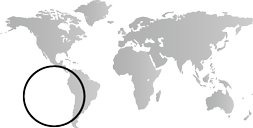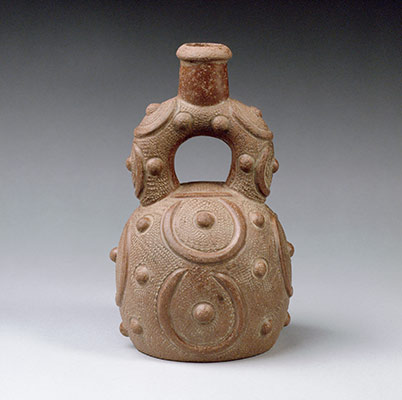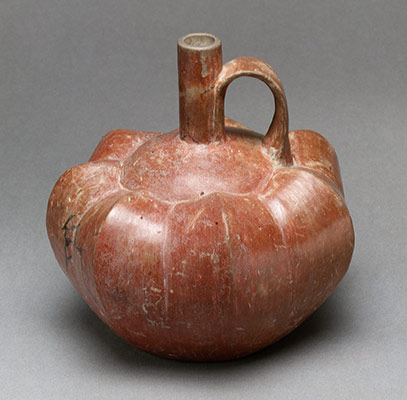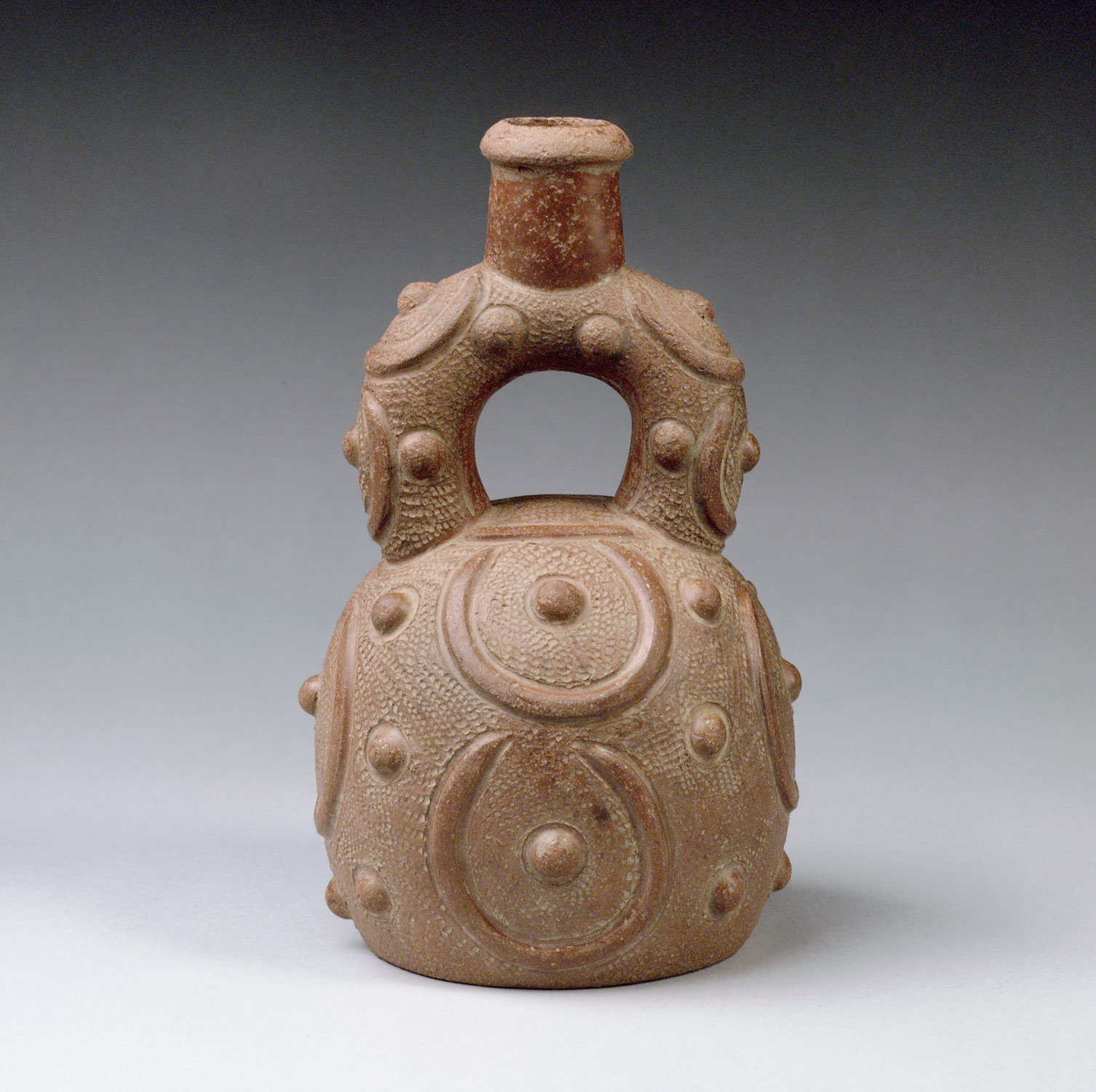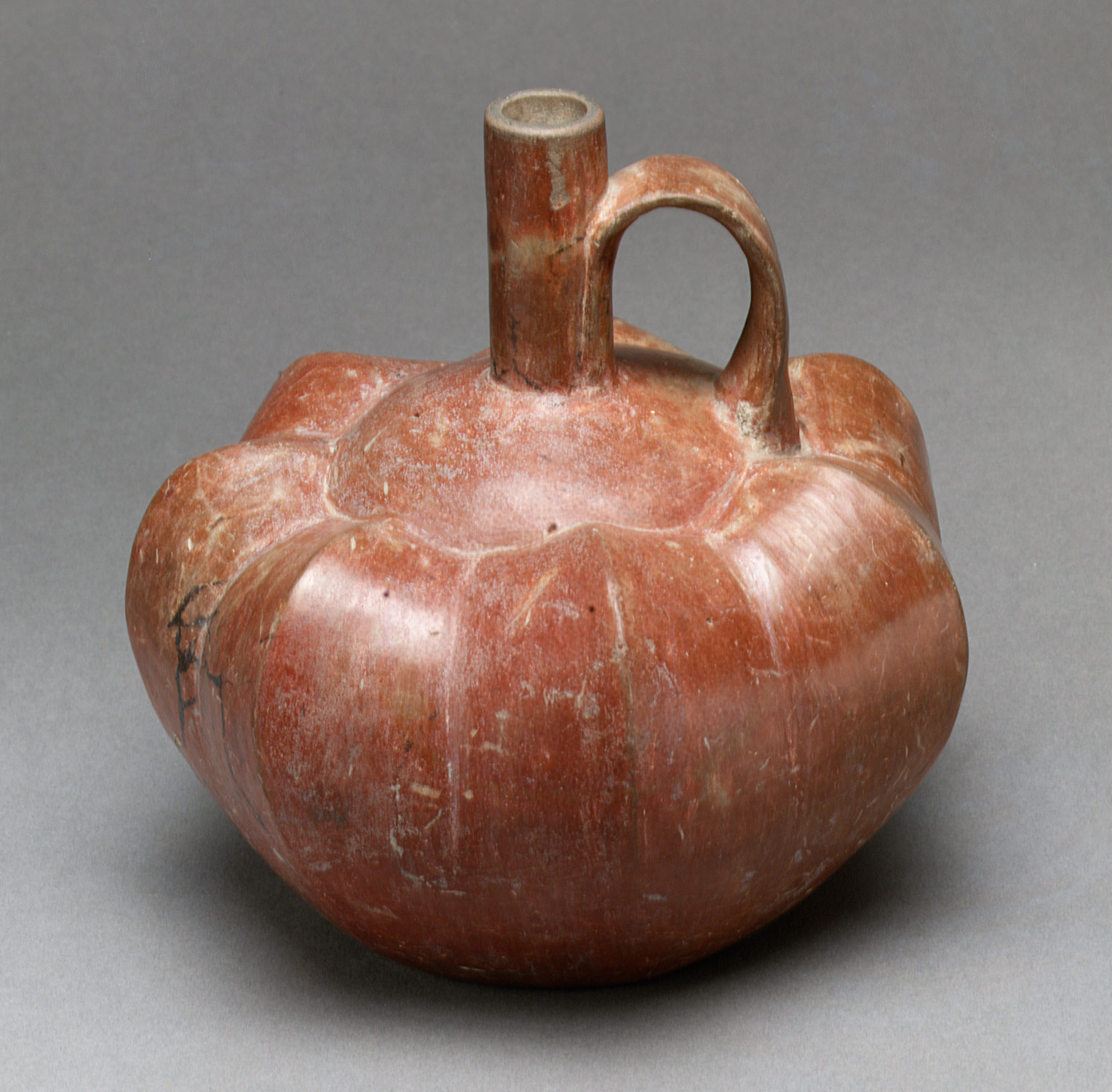Small-scale irrigation agriculture becomes more common and lessens the dependence on marine resources for food. Larger and more stable populations result. The making and firing of ceramics throughout expanded areas of northern South America appear to coincide with the increase in food supply. The north central regions of Peru, both highland and coast, experience prosperity and settlements grow to include impressively sized public structures. The use and availability of luxury objects such as seashells, rare and colorful bird feathers, and semiprecious stones, indicate a growing status differentiation in social class.
South America, 2000–1000 B.C.
Timeline
2000 B.C.
1750 B.C.
NORTHERN ANDES
CENTRAL AND SOUTHERN ANDES
1750 B.C.
1500 B.C.
NORTHERN ANDES
CENTRAL AND SOUTHERN ANDES
1500 B.C.
1250 B.C.
NORTHERN ANDES
CENTRAL AND SOUTHERN ANDES
1250 B.C.
1000 B.C.
NORTHERN ANDES
CENTRAL AND SOUTHERN ANDES
Overview
Key Events
-
ca. 2000 B.C.
The so-called Temple of the Crossed Hands, a large square building with mud reliefs of crossed human arms in an interior chamber, is built at Kotosh in the north central Andean highlands. Constructed on top of an earlier building, it too will function as a base for a later structure. Objects of baked clay are associated with the temple; fired clay bowls appear at the site about 200 years later.
-
ca. 1800 B.C.
El Paraíso, one of a number of significant centers on Peru’s central Pacific coast, is inland from the seashore and uses quarried stone for ceremonial buildings and platform mounds, the latter arranged in a U shape. Located near arable land, El Paraíso undertakes agricultural irrigation. These central coast developments are umbrellaed by the term Manchay.
-
ca. 1700 B.C.
Construction begins on the pyramid at the site of Cerro Sechín in the north-central valley of Casma. Built of conical adobes set in clay mortar, the pyramid is placed at the base of a hill and is quadrangular in plan. Smaller buildings flank each side.
-
ca. 1600 B.C.
Ceramic vessels at Ecuador’s Valdivian centers undergo formal and decorative changes. Machalilla ceramics replace Validivian ones, with a significant addition of the stirrup spout bottle. The bottle, where two spouts join to become one terminal, is much favored in northwest South America for hundreds of years.
-
ca. 1500 B.C.
The Huaca de los Reyes, a grand building complex of plazas, sunken courts, colonnades, towers, and adobe sculptures, is built of stone and clay mortar at the site of Caballo Muerto in Peru’s Moche Valley. It is but one of the impressive building complexes of the period on the north and central Pacific coast of Peru.
-
ca. 1500 B.C.
Gold is hammered into thin foil and placed in the hands and mouth of a youth upon burial at the central highland site of Waywaka in Peru. The gold foil is the first evidence for the working of metals in South America.
-
ca. 1450 B.C.
At Garagay in the Rímac Valley of Peru, friezes of finely modeled clay decorate a temple wall. Painted yellow, blue, red and white, the friezes depict fanged supernaturals combining elements of spiders with anthropomorphic features.
-
ca. 1400 B.C.
The site of Cotocollao north of Quito, where ceramic vessels show similarities to those of Machalilla and later Chorrera ones, maintains trading contacts with the coast.
-
ca. 1350 B.C.
In Peru’s Lurín Valley, an anthropomorphic figure over two feet high and made of a bottle gourd painted with polychrome slip is buried in a temple mound at the site of Mina Perdida. Perhaps the representation of a mythic ancestor, the image has a prominent upper lip from which six large canines protrude.
-
ca. 1300 B.C.
At Cerro Sechín, a stone wall is built around the stepped pyramid and its outer buildings. The slabs are embellished with shallowly engraved images of warriors and rulers as well as images of dismembered human figures.
-
ca. 1200 B.C.
Rich burials placed in the Cupisnique quebrada (ravine) between the northern Peruvian valleys of Chicama and Jequetepeque include numerous ceramic stirrup spout vessels of distinctive, sculptural style. Cupisnique has given its name to the cultural developments of this period on the wider north coast.
-
ca. 1200 B.C.
Chorrera ceramics of southwest Ecuador develop out of earlier Valdivia and Machalilla traditions, but are further refined with well-finished surfaces and an enhanced repertory of forms.
-
ca. 1200 B.C.
Machalilla ceramic vessels are traded long distances from the coast. They have been found at Narrío sites in the highlands and at Tayo Cave on eastern slopes of the Andes.
-
ca. 1100 B.C.
A massive flat-topped mound known today as the Old Temple at the site of Chavín de Huántar is built. At a height of 9,800 feet in the Andes’ Callejón de Conchucos, its U-shaped layout recalls earlier coastal complexes. The huge construction has a rubble core sheathed with polished slabs of granite, sandstone, and limestone.
Citation
“South America, 2000–1000 B.C.” In Heilbrunn Timeline of Art History. New York: The Metropolitan Museum of Art, 2000–. http://www.metmuseum.org/toah/ht/?period=03®ion=sa (October 2000)
Related
Map
